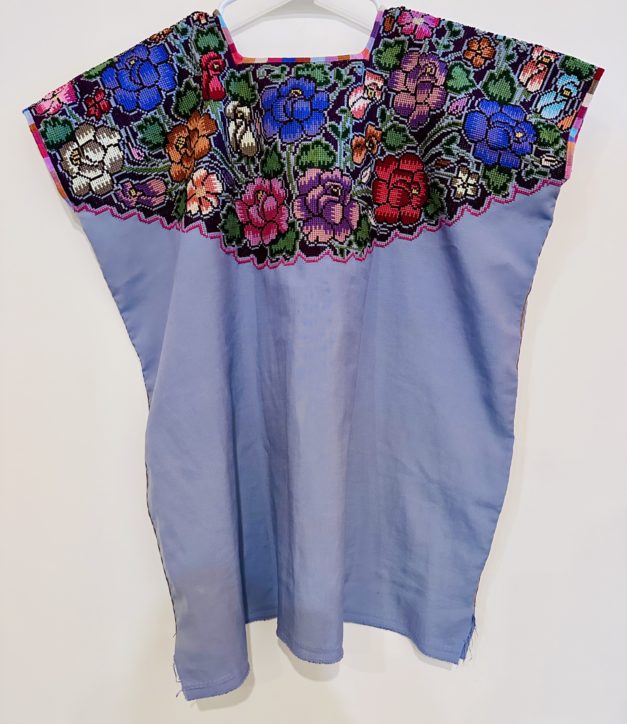Join us in Oaxaca from December 6 to 14, 2024, for a spectacular insider’s view of the textile culture and history of this World Heritage colonial city. We have created this experience in collaboration with Fiber Circle Studio in Petaluma, California, and owner founder Alisha Bright. Lots of touring plus hands-on workshops to keep you excited and engaged in the weaving and textile culture.
TRIP HIGHLIGHTS
- Visit to artisan studios in Teotitlan del Valle including silk and tapestry weavers
- Participate in a two-day natural dye workshop
- Learn or enhance your skills in a two-day tapestry weaving workshop
- Travel to the mountain village of Chichicapam for a one-day spinning workshop
- Discover key sights – Hierve el Agua, and El Tule, a 3,000 year old cypress tree
- Visit important museums and shops
- Wander the Sunday tianguis at the Tlacolula Market, a confluence of art, craft and more
- Meet a red clay potter in her famous ceramics studio
- Experience Virgin of Guadalupe parades in downtown Oaxaca
- Show & tell your work, share your experience with the group
- Enjoy a grand finale dinner with our group and leaders

(No prior weaving or dyeing experience is necessary. This is open and valuable to all levels of fiber artists and fiber admirers.)
DAY 1 | Arrive, settle in & welcome! –December 6, 2024
Arrive, travel to Teotitlan del Valle on your own, at your own expense. We will provide directions from the airport. Box supper available upon check-in at our upscale bed and breakfast inn. Overnight in Teotitlan del Valle.
DAY 2 | Introduction, visit weaving cooperatives, begin dye workshop — December 7, 2024
Breakfast, introduction to the textile culture of Oaxaca with a presentation. Morning excursion to 3 cooperatives and workshops to meet weavers in Teotitlan del Valle who create tapestries, clothing, and handbags. After lunch, we will meet at the dye studio and begin the process to create naturally dyed skeins of wool. Dinner will be at our bed and breakfast inn. Overnight in Teotitlan del Valle.
About the Natural Dye Workshop: Participants will dye an assortment of colors using various plants and overdyed techniques. Participants will dye 15 wool skeins of 100 grams, with enough colors and materials to weave a small sampler on our weaving day.
DAY 3 | Natural dye workshop – 15 colors; 15 skeins of wool — December 8, 2024
Breakfast. Visit the Tlacolula market. Lunch at local comedor. We’ll resume the natural dye workshop to dye skeins of wool exploring locally sourced plant materials of indigo, pomegranate, wild marigold, plus cochineal. The workshop will cover chemistry in dye preparation and techniques for over-dyeing. Box supper at dye studio. Overnight in Teotitlan del Valle.
DAY 4 | Spinning workshop, dip in the waters of Hierve el Agua — December 9, 2024
Breakfast. Excursion to Chichicapam to meet a family of spinners who work with only the finest quality Churro sheep wool. We will have an opportunity to spin yarn using the drop-spindle (malacate) and purchase handspun yarn. Visit to Hierve el Agua. Dinner on your own. Overnight in Teotitlan del Valle.
DAY 5 | Weaving workshop, ceramics studio — December 10, 2024
Breakfast. Morning weaving workshop – we’ll be working on a frame loom that will produce a sampler or wall hanging approximately 10” x 18” using the yarns prepared during the natural dye workshop. Lunch at the weaving studio. Afternoon excursion to ceramics village of San Marcos Tlapazola. Dinner on your own. Overnight in Teotitlan del Valle.
DAY 6 | Weaving workshop, visit El Tule, head to la ciudad de Oaxaca, optional Mezcal tastings! December 11, 2024
Breakfast. Morning weaving workshop to continue working on and finishing projects. Lunch at a local comedor. Excursion to El Tule to see the ancient cypress tree and visit flying shuttle loom weaver. Dinner at Oaxaca Te Amo. Overnight in Oaxaca City. We will provide suggestions for anyone who wants to do Mezcal tastings.
DAY 7 | Textile museum and shops, Virgin de Guadalupe parades — December 12, 2024
Breakfast. Morning guided walking tour of Oaxaca textile museum and important shops. Lunch on your own and opportunity to see Virgin of Guadalupe parades in El Centro. Dinner on your own. Overnight in Oaxaca City.
DAY 8 | Show & tell, wander the city, final dinner — December 13, 2024
Breakfast. Discussion of community, culture, textiles, show and tell of weaving samplers. Lunch and afternoon on your own. Gala Grand Finale Dinner. Overnight in Oaxaca City.
DAY 9 | Hasta luego! — December 14, 2024
Breakfast. Depart on flights home from Oaxaca airport. We will help arrange taxi transportation at your own expense.





PRICING
- $4,295 (per person/double occupancy)
- $4,995 (per person/single occupancy)
REGISTER
- Please download this form, complete it and return it by email to norma.schafer@icloud.com
- A $500 non-refundable deposit will reserve your space – you will receive an invoice after your registration form is received. The remaining balance will be due on August 1, 2024.
- PLEASE TELL US YOU ARE REGISTERING DIRECTLY WITH OAXACA CULTURAL NAVIGATOR
For cancellations made on or before August 1, 2024, we will honor a 50% refund. Any cancellations after August 1, 2024, will not qualify for a refund. Details of the cancellation policy can be found here.




















































































